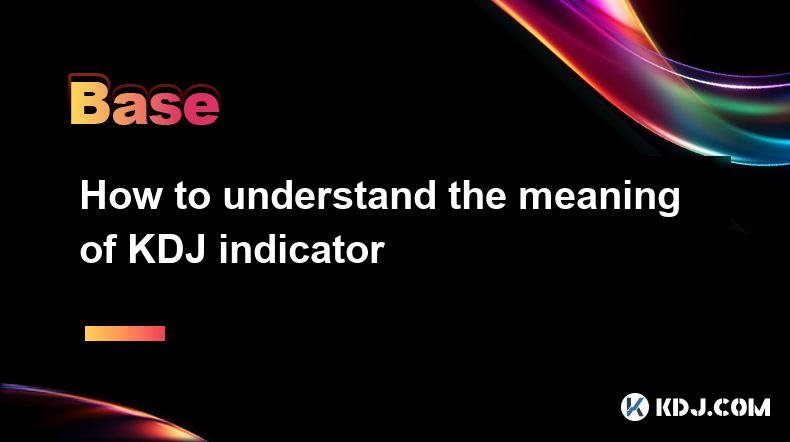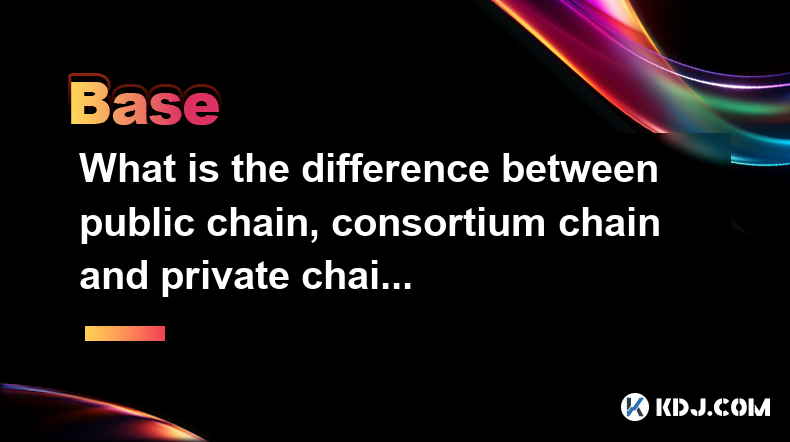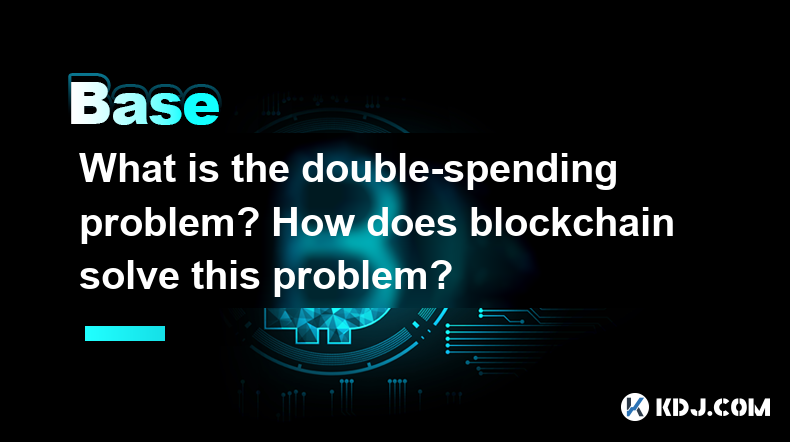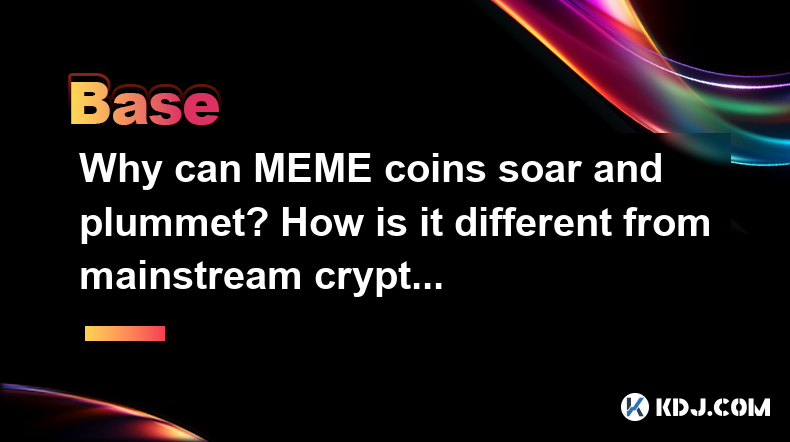-
 Bitcoin
Bitcoin $84,293.8118
2.92% -
 Ethereum
Ethereum $1,812.6156
1.61% -
 Tether USDt
Tether USDt $0.9995
-0.01% -
 XRP
XRP $2.1300
3.96% -
 BNB
BNB $598.0731
1.81% -
 Solana
Solana $122.5476
6.46% -
 USDC
USDC $0.9999
0.00% -
 Dogecoin
Dogecoin $0.1697
6.92% -
 Cardano
Cardano $0.6614
3.58% -
 TRON
TRON $0.2399
1.67% -
 UNUS SED LEO
UNUS SED LEO $9.4721
0.87% -
 Chainlink
Chainlink $12.9918
2.93% -
 Toncoin
Toncoin $3.3918
-5.15% -
 Stellar
Stellar $0.2593
0.64% -
 Avalanche
Avalanche $18.1424
0.54% -
 Sui
Sui $2.2723
2.26% -
 Shiba Inu
Shiba Inu $0.0...01227
0.72% -
 Hedera
Hedera $0.1657
3.27% -
 Litecoin
Litecoin $84.4108
2.68% -
 Polkadot
Polkadot $4.0452
0.41% -
 MANTRA
MANTRA $6.2735
-2.26% -
 Bitcoin Cash
Bitcoin Cash $299.8507
1.71% -
 Bitget Token
Bitget Token $4.5438
1.99% -
 Dai
Dai $1.0001
0.01% -
 Ethena USDe
Ethena USDe $0.9992
-0.03% -
 Hyperliquid
Hyperliquid $11.9337
5.81% -
 Monero
Monero $215.5583
2.77% -
 Uniswap
Uniswap $5.9113
3.01% -
 Pi
Pi $0.5297
-9.83% -
 NEAR Protocol
NEAR Protocol $2.4929
1.07%
How to understand the meaning of KDJ indicator
The KDJ indicator, used in crypto trading, consists of K, D, and J lines to predict price movements and identify potential buy or sell signals based on market momentum.
Apr 03, 2025 at 10:49 am

The KDJ indicator, also known as the Stochastic Oscillator, is a popular technical analysis tool used by traders in the cryptocurrency market to predict price movements and identify potential buy or sell signals. The KDJ indicator consists of three lines: the K line, the D line, and the J line. These lines are calculated based on the highest high and the lowest low of a given period, typically 9 days, and the closing price of the asset. The KDJ indicator is displayed as a percentage, ranging from 0 to 100, and is often used in conjunction with other technical indicators to confirm trading signals.
Components of the KDJ Indicator
The KDJ indicator is composed of three lines, each representing a different aspect of the price movement. The K line, also known as the fast line, is the most sensitive to price changes and is calculated using the following formula: K = (Current Close - Lowest Low) / (Highest High - Lowest Low) 100. The D line, also known as the slow line, is a moving average of the K line and is calculated as D = (K + 2 Previous D) / 3. The J line, also known as the overbought/oversold line, is calculated as J = 3D - 2K. These three lines work together to provide a comprehensive view of the market's momentum and potential trend reversals.
Interpreting the KDJ Indicator
The KDJ indicator is primarily used to identify overbought and oversold conditions in the market. When the K, D, and J lines are above 80, it suggests that the market is overbought, and a price correction may be imminent. Conversely, when the lines are below 20, it indicates that the market is oversold, and a price rebound may be on the horizon. Traders often look for crossovers between the K and D lines to generate buy or sell signals. A bullish signal is generated when the K line crosses above the D line, while a bearish signal is generated when the K line crosses below the D line.
Using the KDJ Indicator in Cryptocurrency Trading
The KDJ indicator can be a valuable tool for cryptocurrency traders looking to identify potential entry and exit points. Here are some ways to use the KDJ indicator in your trading strategy:
Confirming Trend Reversals: When the KDJ indicator generates a buy or sell signal in the direction of the prevailing trend, it can be used to confirm a potential trend reversal. For example, if the price of a cryptocurrency is in an uptrend and the KDJ indicator generates a bullish signal, it may indicate that the uptrend is likely to continue.
Identifying Overbought and Oversold Conditions: The KDJ indicator can help traders identify when a cryptocurrency is overbought or oversold, which can be useful for determining potential price corrections or rebounds. When the K, D, and J lines are above 80, it may be a good time to consider taking profits or shorting the asset. Conversely, when the lines are below 20, it may be a good time to consider buying the dip.
Divergence Trading: Divergence occurs when the price of a cryptocurrency moves in the opposite direction of the KDJ indicator. Bullish divergence occurs when the price makes a lower low, but the KDJ indicator makes a higher low, suggesting that the downtrend may be losing momentum. Bearish divergence occurs when the price makes a higher high, but the KDJ indicator makes a lower high, suggesting that the uptrend may be losing steam. Traders can use divergence to anticipate potential trend reversals and adjust their trading strategies accordingly.
Limitations of the KDJ Indicator
While the KDJ indicator can be a useful tool for cryptocurrency traders, it is not without its limitations. Here are some factors to consider when using the KDJ indicator:
False Signals: Like any technical indicator, the KDJ indicator can generate false signals, especially in choppy or sideways markets. Traders should always use the KDJ indicator in conjunction with other technical analysis tools and consider the overall market context before making trading decisions.
Lag: The KDJ indicator is based on historical price data and may lag behind real-time price movements. This can result in delayed signals, which may cause traders to enter or exit positions too late.
Over-reliance: Some traders may become overly reliant on the KDJ indicator and neglect other important factors, such as fundamental analysis, market sentiment, and risk management. It is crucial to use the KDJ indicator as part of a comprehensive trading strategy and not as the sole basis for making trading decisions.
Combining the KDJ Indicator with Other Technical Analysis Tools
To increase the effectiveness of the KDJ indicator, traders often combine it with other technical analysis tools. Here are some popular combinations:
Moving Averages: Traders can use moving averages to confirm the direction of the trend and filter out false signals generated by the KDJ indicator. For example, if the KDJ indicator generates a bullish signal, but the price is below the 200-day moving average, it may be a sign that the uptrend is not strong enough to warrant a long position.
Relative Strength Index (RSI): The RSI is another momentum oscillator that can be used to confirm overbought and oversold conditions identified by the KDJ indicator. When both the KDJ and RSI indicators are in overbought or oversold territory, it may increase the likelihood of a price correction or rebound.
Support and Resistance Levels: Traders can use support and resistance levels to identify potential entry and exit points based on the signals generated by the KDJ indicator. For example, if the KDJ indicator generates a bullish signal near a strong support level, it may increase the probability of a successful long trade.
Adjusting KDJ Indicator Settings for Cryptocurrency Trading
The default settings for the KDJ indicator are typically set to a 9-day period, but traders can adjust these settings to suit their trading style and the specific cryptocurrency they are trading. Here are some factors to consider when adjusting the KDJ indicator settings:
Shorter Periods: Using a shorter period, such as 5 or 7 days, can make the KDJ indicator more sensitive to price changes and generate more frequent signals. This may be suitable for short-term traders looking to capitalize on quick price movements.
Longer Periods: Using a longer period, such as 14 or 21 days, can make the KDJ indicator less sensitive to price changes and generate fewer, but potentially more reliable, signals. This may be suitable for longer-term traders looking to identify major trend reversals.
Overbought and Oversold Levels: Traders can adjust the overbought and oversold levels of the KDJ indicator to suit their risk tolerance and trading strategy. For example, some traders may prefer to use 70 and 30 as their overbought and oversold levels, respectively, to generate signals earlier than the default 80 and 20 levels.
Backtesting and Optimizing KDJ Indicator Strategies
Before using the KDJ indicator in live trading, it is essential to backtest and optimize your trading strategy to ensure its effectiveness. Here are some steps to follow when backtesting and optimizing KDJ indicator strategies:
Select a Timeframe: Choose a timeframe that aligns with your trading style and the specific cryptocurrency you are trading. Common timeframes for backtesting include 1-hour, 4-hour, and daily charts.
Define Entry and Exit Rules: Clearly define your entry and exit rules based on the signals generated by the KDJ indicator. For example, you may enter a long position when the K line crosses above the D line and the KDJ indicator is below 20, and exit the position when the K line crosses below the D line or the KDJ indicator rises above 80.
Set Risk Management Parameters: Determine your risk management parameters, such as position sizing, stop-loss levels, and take-profit targets, to ensure that your trading strategy is sustainable over the long term.
Backtest the Strategy: Use historical price data to backtest your KDJ indicator strategy and assess its performance over different market conditions. Look for consistent profitability, a high win rate, and a favorable risk-reward ratio.
Optimize the Strategy: Based on the results of your backtesting, optimize your KDJ indicator strategy by adjusting the indicator settings, entry and exit rules, and risk management parameters. Continuously monitor and refine your strategy to adapt to changing market conditions.
Common Questions Related to the KDJ Indicator
Q: What is the difference between the KDJ indicator and the Stochastic Oscillator?
A: The KDJ indicator and the Stochastic Oscillator are essentially the same technical analysis tool, with the KDJ indicator being a variation of the Stochastic Oscillator that is more commonly used in Asian markets. The main difference is that the KDJ indicator includes an additional J line, which is calculated as 3D - 2K, to provide a more comprehensive view of the market's momentum.
Q: Can the KDJ indicator be used for all cryptocurrencies?
A: Yes, the KDJ indicator can be used for all cryptocurrencies, as it is based on price data and can be applied to any tradable asset. However, the effectiveness of the KDJ indicator may vary depending on the specific cryptocurrency and market conditions, so it is essential to backtest and optimize your trading strategy for each asset.
Q: How often should I adjust the KDJ indicator settings?
A: The frequency of adjusting the KDJ indicator settings depends on your trading style and the specific cryptocurrency you are trading. Short-term traders may need to adjust the settings more frequently to adapt to changing market conditions, while longer-term traders may prefer to use more stable settings. It is crucial to continuously monitor and refine your trading strategy to ensure its effectiveness over time.
Q: Can the KDJ indicator be used as a standalone trading tool?
A: While the KDJ indicator can provide valuable insights into market momentum and potential trend reversals, it is generally not recommended to use it as a standalone trading tool. The KDJ indicator should be used in conjunction with other technical analysis tools, such as moving averages, RSI, and support and resistance levels, to confirm trading signals and increase the probability of successful trades. Additionally, traders should always consider fundamental analysis, market sentiment, and risk management when making trading decisions.
Disclaimer:info@kdj.com
The information provided is not trading advice. kdj.com does not assume any responsibility for any investments made based on the information provided in this article. Cryptocurrencies are highly volatile and it is highly recommended that you invest with caution after thorough research!
If you believe that the content used on this website infringes your copyright, please contact us immediately (info@kdj.com) and we will delete it promptly.
- Justin Sun Accuses First Digital Trust of Insolvency, Triggering Severe Depeg of the FTUSD Stablecoin
- 2025-04-05 03:20:12
- The psychology of betting: how digital assets influence player behavior in 1win
- 2025-04-05 03:20:12
- Remittix Solves Real-World Problems and Provides an Actual Solution to Crypto Payments
- 2025-04-05 03:15:12
- The Crypto Market's 2025 Bull Run Is Here
- 2025-04-05 03:15:12
- If You're Hunting for the Best Meme Coin to Buy, Now's the Time to Look Beyond the Usual Suspects
- 2025-04-05 03:10:13
- PayPal Expands Crypto Services with Solana and Chainlink
- 2025-04-05 03:10:13
Related knowledge

Why is the oracle called the bridge between blockchain and the real world?
Apr 04,2025 at 04:00am
The concept of an oracle in the cryptocurrency and blockchain world is crucial for understanding how these decentralized systems interact with external data. The oracle is often referred to as the bridge between blockchain and the real world because it serves as a vital intermediary that fetches, verifies, and transmits off-chain data to the on-chain en...

What role does the Merkle tree play in the blockchain? Why can it verify data integrity?
Apr 04,2025 at 01:29pm
The Merkle tree plays a crucial role in the blockchain, primarily due to its ability to efficiently and securely verify data integrity. This article will delve into the structure of a Merkle tree, its implementation in blockchain, and how it ensures the integrity of data. Understanding the Structure of a Merkle TreeA Merkle tree, also known as a hash tr...

What is the difference between public chain, consortium chain and private chain? What scenarios are suitable for each?
Apr 04,2025 at 09:21pm
In the world of blockchain technology, understanding the differences between public chains, consortium chains, and private chains is crucial for selecting the right type of blockchain for specific applications. Each type of blockchain has its own unique characteristics and use cases, which we will explore in detail. Understanding Public ChainsPublic cha...

What is the double-spending problem? How does blockchain solve this problem?
Apr 04,2025 at 09:07am
The double-spending problem is a significant challenge in the realm of digital currencies. Double-spending refers to the potential for a digital currency to be spent more than once. This issue arises because digital files, unlike physical cash, can be easily duplicated. If not addressed, double-spending could undermine the integrity and trust in any dig...

What role does consensus mechanism play in blockchain? Why can't everyone keep accounts?
Apr 05,2025 at 12:29am
The consensus mechanism is a fundamental component of blockchain technology, serving as the backbone for maintaining the integrity and security of the network. It ensures that all participants in the network agree on the state of the ledger, which is crucial for the decentralized nature of blockchain. Without a consensus mechanism, the decentralized sys...

Why can MEME coins soar and plummet? How is it different from mainstream cryptocurrencies?
Apr 04,2025 at 03:07pm
The world of cryptocurrencies is vast and diverse, with a wide range of digital assets that cater to different needs and interests. Among these, MEME coins have carved out a unique niche, often experiencing dramatic price fluctuations that can both soar and plummet in a short period. This phenomenon, while intriguing, differs significantly from the beha...

Why is the oracle called the bridge between blockchain and the real world?
Apr 04,2025 at 04:00am
The concept of an oracle in the cryptocurrency and blockchain world is crucial for understanding how these decentralized systems interact with external data. The oracle is often referred to as the bridge between blockchain and the real world because it serves as a vital intermediary that fetches, verifies, and transmits off-chain data to the on-chain en...

What role does the Merkle tree play in the blockchain? Why can it verify data integrity?
Apr 04,2025 at 01:29pm
The Merkle tree plays a crucial role in the blockchain, primarily due to its ability to efficiently and securely verify data integrity. This article will delve into the structure of a Merkle tree, its implementation in blockchain, and how it ensures the integrity of data. Understanding the Structure of a Merkle TreeA Merkle tree, also known as a hash tr...

What is the difference between public chain, consortium chain and private chain? What scenarios are suitable for each?
Apr 04,2025 at 09:21pm
In the world of blockchain technology, understanding the differences between public chains, consortium chains, and private chains is crucial for selecting the right type of blockchain for specific applications. Each type of blockchain has its own unique characteristics and use cases, which we will explore in detail. Understanding Public ChainsPublic cha...

What is the double-spending problem? How does blockchain solve this problem?
Apr 04,2025 at 09:07am
The double-spending problem is a significant challenge in the realm of digital currencies. Double-spending refers to the potential for a digital currency to be spent more than once. This issue arises because digital files, unlike physical cash, can be easily duplicated. If not addressed, double-spending could undermine the integrity and trust in any dig...

What role does consensus mechanism play in blockchain? Why can't everyone keep accounts?
Apr 05,2025 at 12:29am
The consensus mechanism is a fundamental component of blockchain technology, serving as the backbone for maintaining the integrity and security of the network. It ensures that all participants in the network agree on the state of the ledger, which is crucial for the decentralized nature of blockchain. Without a consensus mechanism, the decentralized sys...

Why can MEME coins soar and plummet? How is it different from mainstream cryptocurrencies?
Apr 04,2025 at 03:07pm
The world of cryptocurrencies is vast and diverse, with a wide range of digital assets that cater to different needs and interests. Among these, MEME coins have carved out a unique niche, often experiencing dramatic price fluctuations that can both soar and plummet in a short period. This phenomenon, while intriguing, differs significantly from the beha...
See all articles





















































































